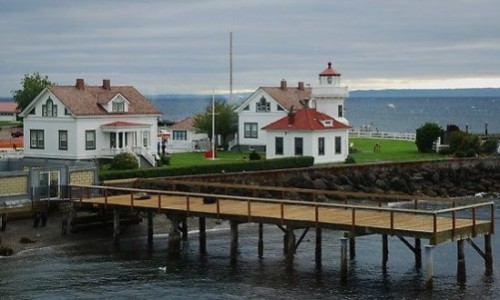By Peter Anderson, Director, Mukilteo Historical Society
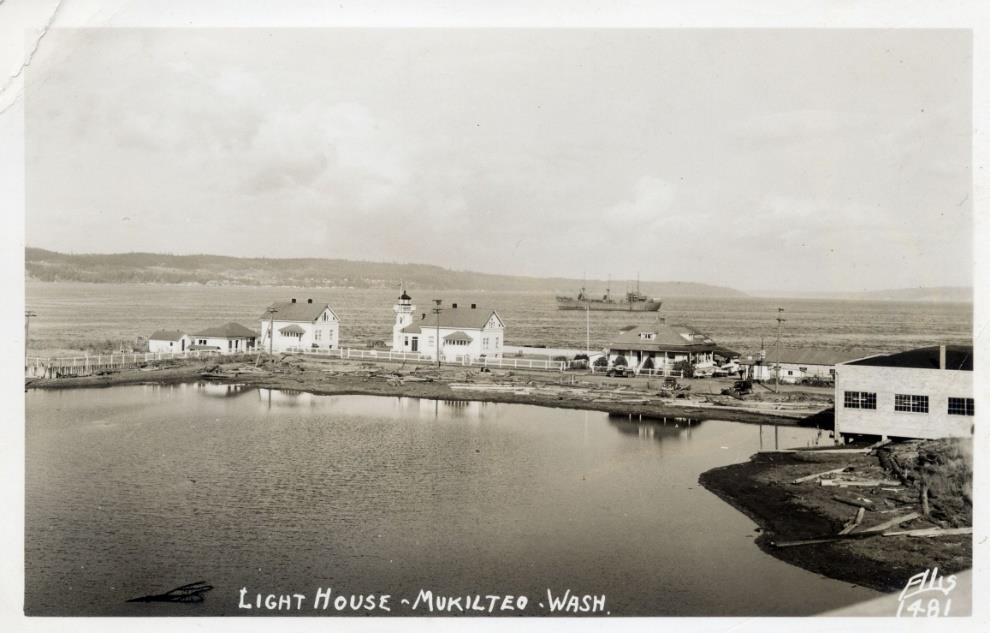
Today’s Lighthouse Park parking area was once the home ballfield for the Mukilteo baseball team. Besides competing against visiting teams here, the Mukilteo team had to battle frequent flooding of their home field. The area had been a tidal lagoon, and the community built dikes to create a dry space for their beloved team to play. Storms and high tides would sometimes break the dikes, and they frequently needed to be rebuilt or reinforced. Before dikes (and later more permanent seawalls) were built, Mukilteo’s downtown was often flooded as far as Park Avenue. Early buildings in the area were built on raised foundations. Baseball games had to wait for the field to dry out.
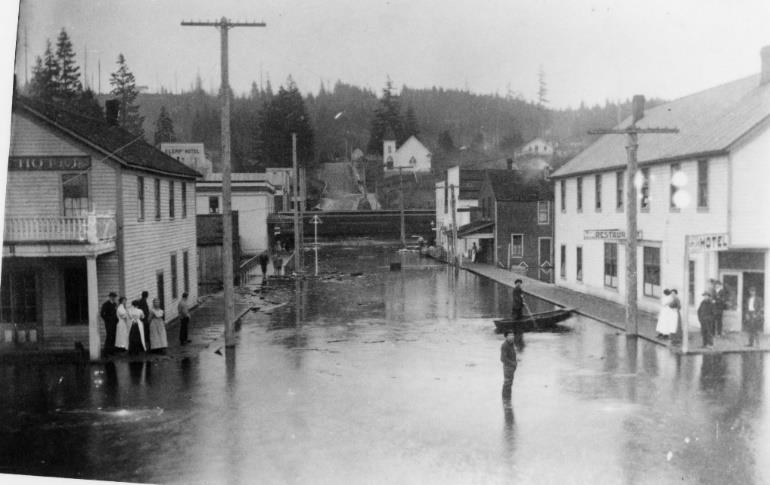
The first dike, built in the early 1900’s, extended from Losvar’s Boathouse to the tracks in a line with the north edge of Rousseau’s property (where the Losvar Condominiums are today). The ground was so unstable that poles sank out of sight in the mud. This dike was the forerunner of two more. The next was constructed from the lighthouse sea wall to a group of houses to the south where the ground rose sufficiently. This dike was demolished when a strong southwest gale sent waves and logs battering the gravel and pilings supporting it. The community built another bigger, stronger dike with a larger sluice box that finally kept the field dry for the remaining duration of the baseball team’s existence.
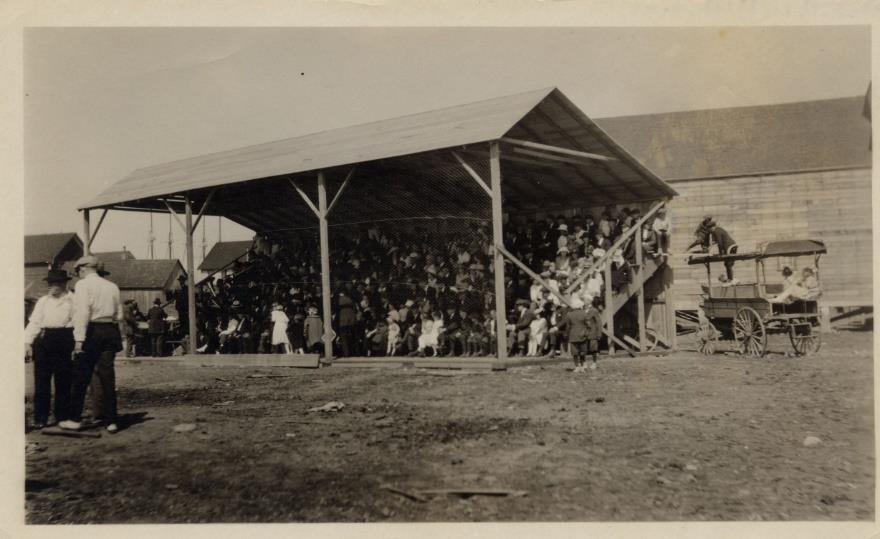
Organized baseball had been played in Mukilteo at least as early as 1916. The home team had a big following of loyal fans, and games were festive occasions drawing big crowds. Donations of cash and materials were made by the Crown Lumber Company and several Everett businesses. The dikes, a grandstand and bleachers were built by Mukilteo volunteers using material donated by Crown Lumber. Everett businesses funded uniforms, and the names of their firms were sewn onto the backs.
Mukilteo’s baseball team played in a City-County League with two Everett teams (the Paper Mill and the Knights of Columbus) and a team from Granite Falls. Those games were held on Tuesday and Thursday evenings starting at 6:30 and lasting for seven innings. Games with other teams were held on Sunday afternoons.
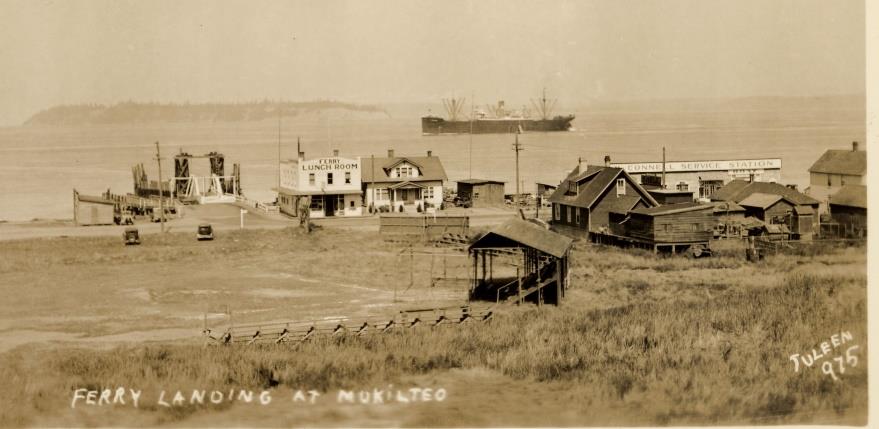
Most of Mukilteo’s team players were employees of the Crown Lumber Company. Howard Josh, who built the original Ferry Lunchroom (where Ivar’s is now), was Mukilteo’s team manager. It was especially a big event
when the team from Port Angeles came to town for a game with Mukilteo, because they were mostly employees of the big lumber mill there that was also owned by Crown Lumber.
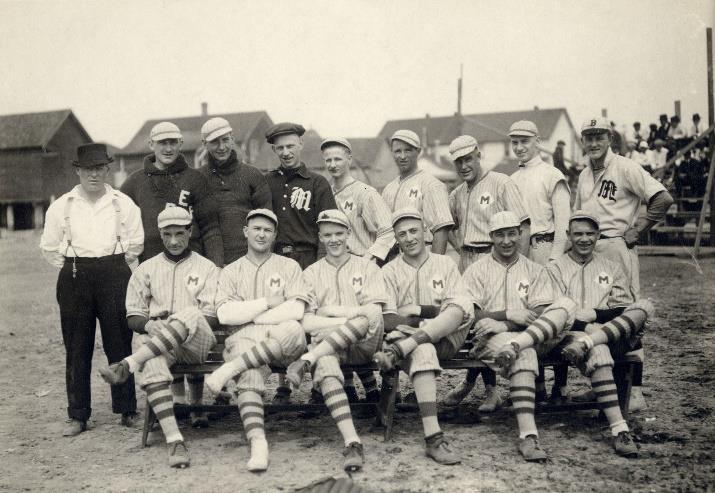
The ballfield was occasionally used for other events (sometimes in connection with a baseball game). Historical Society archives contain several photos of a large clambake party held on the field on August 5, 1914. The photos show a large crowd standing on the field facing a reviewing stand.
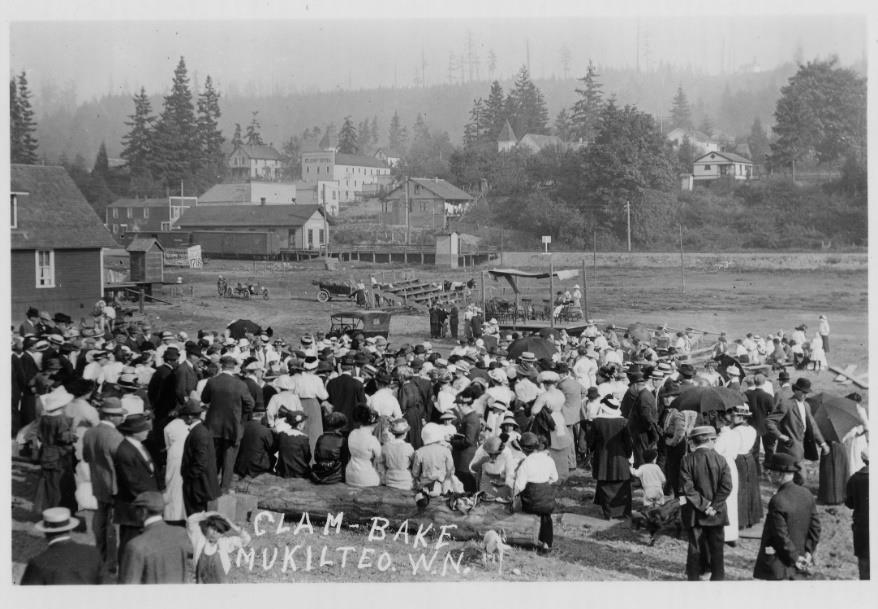
Leona Josh Kaiser (Howard Josh’s daughter) recalls another huge “Indian Clambake” held at the field in connection with a game against Monroe on August 23, 1923. Her father, who was the Crown Lumber tugboat captain, took a group of volunteers to Whidbey Island to dig clams and bring them back to Mukilteo. A total of 44 sacks of clams, five sacks of potatoes, and a thousand ears of corn were layered in a heated pit with seaweed. Other picnic fare was prepared while the program of field sports went on. Starting at 10 a.m., a number of field events including men’s and women’s races, baseball throws, a ladies nail driving contest and a fat man’s race resulted in the awarding of first and second prizes in ten categories. The clams and other items were put on the fire pit at 1:30 pm, when the baseball game started, and by 4 p.m., the food was ready to serve. The Everett Herald estimated about two thousand people were entertained that day at Mukilteo’s ballfield.
The tideland area that was formerly Mukilteo’s ballfield was filled in, sturdy seawalls were built, and it became part of Lighthouse Park in the 1950s. Initially a Washington State Park, it was deeded to the City in 2003. The City adopted a Lighthouse Park Master Plan in 2004, and the area now features shoreline walking paths, beach access, picnic facilities, playground, boat launch and parking.
Originally published in the 7/31/2019 issue of the Mukilteo Beacon.
